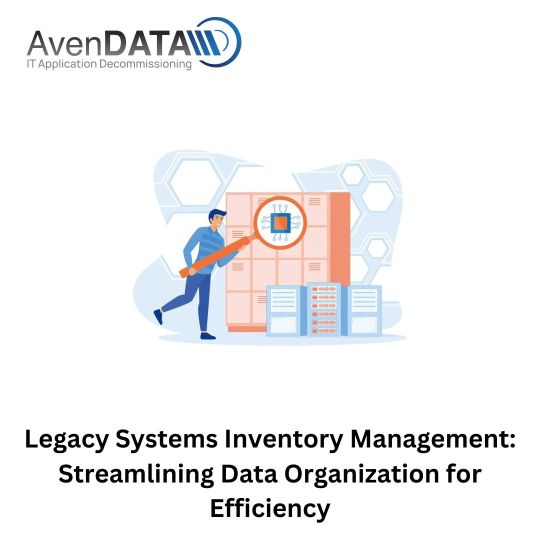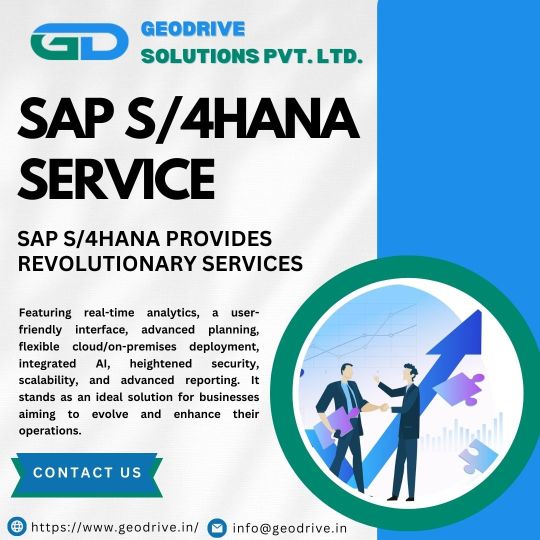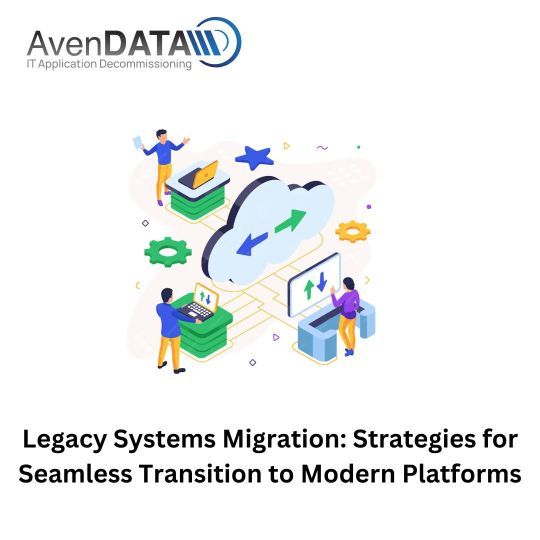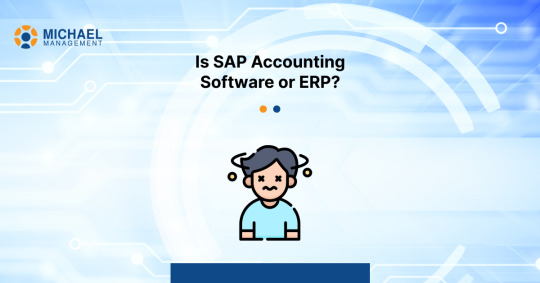#SAP system
Explore tagged Tumblr posts
Text
What Does an SAP Implementation Company Do?
An SAP Implementation Company is responsible for deploying SAP software within an organization, customizing it to meet the business’s specific needs, and ensuring smooth integration across various departments. SAP offers a range of modules covering areas such as finance, supply chain management, human resources, and customer relationship management (CRM). A professional SAP implementation partner configures these modules to align with the organization’s processes.
These companies provide a holistic approach, from initial consulting and system design to training and post-implementation support. Their expertise is critical in ensuring that the SAP system is not just functional but also optimized for maximum performance and return on investment (ROI).
0 notes
Text
Legacy Systems Inventory Management: Streamlining Data Organization for Efficiency

Introduction
In the realm of archive management, one of the most crucial tasks is effectively managing the inventory of legacy systems data. With the accumulation of historical data over years or even decades, organizations often find themselves grappling with the challenge of cataloging and organizing vast amounts of information stored within legacy systems. "Legacy Systems Inventory Management" represents a strategic approach to streamline data organization, ensuring efficiency, accessibility, and compliance in archive management.
The Challenge of Legacy Data Overload
Legacy systems often contain a plethora of data accumulated over the course of their operation. This data may include historical transaction records, customer information, financial data, and more. However, without proper inventory management strategies in place, organizations risk drowning in a sea of unorganized and unstructured data. The challenge lies in cataloging and organizing this data in a way that facilitates easy retrieval, analysis, and compliance with regulatory requirements.
Adopting a Systematic Approach to Inventory Management
To effectively manage the inventory of legacy systems data, organizations must adopt a systematic approach that encompasses both technology and processes. This begins with conducting a comprehensive inventory audit to identify all legacy systems and the data they contain. Once the inventory is established, organizations can then implement robust cataloging and tagging mechanisms to categorize and organize data based on relevance, sensitivity, and other criteria. This systematic approach not only enhances data organization but also facilitates efficient retrieval and compliance with regulatory requirements.
Leveraging Automation and Technology Solutions
In the digital age, organizations have access to a wide range of automation and technology solutions that can streamline inventory management processes. Automated inventory management tools can scan legacy systems, identify data assets, and generate detailed inventory reports automatically. Additionally, organizations can leverage metadata management solutions to enrich data with descriptive tags and attributes, making it easier to search, filter, and retrieve information. By harnessing the power of automation and technology, organizations can significantly reduce the manual effort required for inventory management while improving accuracy and efficiency.
Implementing Governance and Compliance Measures
Effective inventory management goes hand in hand with governance and compliance measures to ensure the integrity, security, and privacy of legacy systems data. Organizations must establish policies and procedures for data access, storage, retention, and disposal, aligning with regulatory requirements and industry best practices. Additionally, regular audits and reviews of inventory data are essential to identify any discrepancies or vulnerabilities and address them promptly. By implementing robust governance and compliance measures, organizations can mitigate risks and ensure the integrity and security of their legacy systems inventory.
Conclusion: Optimizing Efficiency and Compliance in Archive Management
In conclusion, legacy systems inventory management is a critical component of archive management, ensuring efficiency, accessibility, and compliance with regulatory requirements. By adopting a systematic approach, leveraging automation and technology solutions, and implementing governance and compliance measures, organizations can streamline data organization processes, enhance data integrity and security, and unlock the full potential of their legacy systems data. In doing so, they pave the way for more efficient and effective archive management practices, enabling them to derive maximum value from their historical data assets.
#carve-out#it application decommissioning#mergers and acquisitions#system decommissioning#sap system#insolvency#legacy system#liquidation
0 notes
Text
What are the advantages of opting for SAP S/4HANA Services?

Geodrive stands at the forefront of innovation with dedicated teams specializing in various critical aspects of business technology, including product development, SAP S/4HANA setup, migration, and delivery. Our commitment to excellence is evident in our comprehensive approach to SAP S/4HANA services, offering tailored solutions for businesses seeking to optimize their operations. One of Geodrive's key strengths lies in its ability to adapt to diverse technological landscapes. Whether leveraging on-premise infrastructure, tapping into the potential of public or private clouds, or embracing a hybrid system. Geodrive is well-equipped to deliver SAP S/4HANA services tailored to the unique needs of each client. This flexibility ensures that businesses can choose the deployment model that aligns seamlessly with their existing infrastructure and future growth plans. At the heart of Geodrive's service excellence is our commitment to a seamless transition to SAP S/4HANA. We understand that the adoption of a new enterprise resource planning (ERP) system is a significant undertaking, and to address this, we employ a design thinking methodology. This human-centric approach allows us to deeply understand the specific requirements and challenges of each client. By integrating design thinking into our processes, we ensure that the implementation of SAP S/4HANA is not just a technical upgrade but a holistic transformation that aligns with the unique goals and culture of the organization. Geodrive's teams bring a wealth of industry expertise to every project. Our professionals are not only well-versed in the technical intricacies of SAP S/4HANA but also possess a deep understanding of industry-specific challenges and opportunities. This ensures that our clients receive not only a technically sound implementation but also a solution that is finely tuned to their business objectives. In summary, Geodrive is a trusted partner for businesses embarking on the journey of SAP S/4HANA adoption. Our specialized teams, flexible deployment options, design thinking methodology, and industry expertise collectively contribute to a transformative experience, enabling businesses to unlock the full potential of SAP S/4HANA for sustained growth and success.
1 note
·
View note
Text
Dawn
Written for @wolfstarmicrofic prompt #24 - first pet (488 words)
"What is that?"
Remus barely looked up from his book as Sirius stalled in the doorway.
"Hello, love," Remus responded, the picture of calm. "How was work?"
"Don't change the subject." Sirius stomped over to his partner and ripped the book out of his hands, making sure to mark the page with a slip of parchment before turning to Remus and pointing accusingly at his lap. "What is that thing?"
Remus raised an amused eyebrow.
"She's a cat, Pads. Surely you've seen one before?"
He continued petting the creature with one hand as he spoke.
"I know it's a cat, Remus. What I don't know is what it is doing in our apartment!"
"Well, that's easy." Remus smirked. "She's our new baby."
"No."
"No?"
"No," Sirius confirmed. "We cannot have a cat. I am a man who can turn into a dog at will. You are a man who turns into a wolf once a month. Felines and canines, historically, do not get along. So no cats. This is a cat-free zone."
"Counterpoint," Remus offered. "Minerva McGonagall turns into a cat, and she's practically your mother."
"Irrelevant. She does not live in this flat. And neither does that creature."
"Yes, she does," Remus responded. "I found her this morning outside. I took her to the vet and made sure she's healthy. I bought her everything she needs and several things she doesn't. She snuggled me while I napped earlier. She lives here. We're keeping her."
Sirius sighed and massaged his temples.
"Would it help if I told you I named her Dawn?"
Sirius looked up and lifted one eyebrow in a silent question. Remus blushed and looked back down at the orange fluffball in his lap.
"She's our baby, so she needed a fitting name," he explained. "So she's Dawn, the sun to our moon and stars."
Sirius sighed again, but smiled gently and sat down next to Remus on the couch.
"You're a sap, but she can stay," he responded. "Under the condition that she sleeps on her own bed. I don't want my pillow covered in cat fur."
"Deal."
That night, Sirius went to bed early while Remus finished the dishes and took a shower.
When he got to their room, Sirius was already asleep, his head resting just on the edge of his own pillow, ensuring he was as close to Remus's side as possible. And curled into him, pressed up against his stomach, Dawn was sleeping just as comfortably.
Remus grinned as he got into bed with the pair. He knew when he saw the cat that Sirius would fall in love with her after a while, like he did with any animal he came across.
It was Remus's decision to pick up the cat, Remus who bought her food and put on her collar, but it was always going to be Sirius’s cat. That's why he picked her up, after all. For Sirius.
#wolfstar#sirius black#remus lupin#wolfstar fic#fluff#literal fluff#wolfstar microfic#cat dad sirius#cat distribution system#remus is a sap but we love that#sirius is good with every animal#argue with the wall#first pet
56 notes
·
View notes
Text
do love how this is an asoiaf blog but i did not put either show in my top 10 this is the world we live in
#the only season that really compares to the book is season 1.#the rest even when they’re engaging have changed something that feels so central to the hook that i’m mad aksjd.#getting on my soap box#if iwtv s3 is good it may knock someone out. probably qaf.#bsg is p high up there i just think season 4 really suffered on pacing & the suspicious nature of who dies annoyed me.#veep is also very high up there tbh i need to rewatch it. the thing is. as we know. i am a romantic at heart and amy & jonah have my favorit#sitcom relationship. veep has genuinely one of the best finales to ever exist but i’m a sap.#and amy coming back to tell jonah that he made her realize she doesn’t actually have to expect the worst from life. oh my god.#also superstore >>> parks & rec >>> the office bc superstore never romanticized the hell of their job#amy quitting her corporate job when she realized she would never be able to make the changes she wanted within the system she was always#going to compromise too much and wind up like jeff. glenn reopening his dad’s hardware shop & specifically who goes w him & who stays w gina#at the store? it has what the other two lack which is characters that feel like they keep existing after you stop watching#BECAUSE the way they interacted with the world was so real and so much more realistic. amy can’t fix the system but she can find a job that#she doesn’t feel is so soul sucking. glenn may be choosing a harder path by reopening the hardware store but it’s the one that makes him#most fulfilled. gina just gets to make money and be bossy w people who do what they’re told. that rings so true to me.#i almost out bojack horseman in here too actually but once again i think the last season just needed to be a tad longer just like bsg.#also same issue w pitch as w bly manor - it’s an amazingly written season of tv but it’s ONE season of tv#big brother as always outsells yes i am hoping to tempt some of u into watching by posting dan & ian in the dog costume#i have that gif and the ‘sit’ scene saved on my phone always
10 notes
·
View notes
Text
Elevate Efficiency with Top-tier ERP Software for Engineering Companies in Mumbai, India
Unlock unparalleled efficiency for your engineering company with ShantiTechnology's (STERP) advanced ERP software solutions. Tailored specifically for engineering companies in Mumbai, India, our ERP solutions redefine operational excellence. As one of the leading ERP solution providers in India, we bring you state-of-the-art technology to streamline processes, enhance collaboration, and boost productivity.
Experience the next level of business management with ShantiTechnology (STERP) – your trusted partner for cutting-edge ERP software tailored for engineering companies in India and specifically optimized for those in Mumbai.
#ERP software for engineering company#ERP software for engineering companies in India#ERP software for engineering companies in Mumbai#ERP solution providers in India#ERP software#ERP system#cloud ERP#ERP solutions#ERP India#Business Solutions#SAP Business One#Supply Chain Management
8 notes
·
View notes
Text
Legacy Systems Migration: Strategies for Seamless Transition to Modern Platforms

Introduction
In the ever-evolving landscape of technology, legacy systems migration represents a critical juncture for organizations seeking to modernize their IT infrastructure and stay competitive in today's digital marketplace. However, the transition from legacy systems to modern platforms is not without its challenges. In this article, we explore strategies for achieving a seamless and successful migration, ensuring that organizations can leverage the benefits of modern technology while preserving the value of their legacy systems.
Assessing the Landscape: Understanding the Scope and Complexity
The first step in any legacy systems migration project is to assess the landscape and understand the scope and complexity of the undertaking. This involves conducting a comprehensive inventory of existing systems, applications, and data, as well as identifying dependencies, interdependencies, and potential roadblocks. By gaining a clear understanding of the current state of the IT environment, organizations can develop a roadmap for migration that addresses key challenges and priorities.
Developing a Migration Strategy: Prioritizing Objectives and Milestones
Once the landscape has been assessed, the next step is to develop a migration strategy that prioritizes objectives and milestones. This involves defining clear goals for the migration, such as improving performance, enhancing security, reducing costs, or enabling new capabilities. Additionally, organizations should establish measurable milestones and timelines to track progress and ensure alignment with business objectives. By developing a strategic approach to migration, organizations can minimize risks and disruptions while maximizing the benefits of modern platforms.
Choosing the Right Tools and Technologies: Leveraging Automation and Integration
In the age of digital transformation, organizations have access to a wide range of tools and technologies that can facilitate the migration process. From automated migration tools to integration platforms and cloud services, these technologies offer efficient and cost-effective ways to migrate legacy systems to modern platforms. By leveraging automation and integration, organizations can streamline the migration process, reduce manual effort, and mitigate the risk of errors or inconsistencies.
Ensuring Data Integrity and Security: Safeguarding Valuable Assets
Throughout the migration process, ensuring data integrity and security is paramount. This involves implementing robust data validation and verification procedures to ensure that data is transferred accurately and securely from legacy systems to modern platforms. Additionally, organizations should implement stringent security measures to protect sensitive information and mitigate the risk of data breaches or cyber attacks. By prioritizing data integrity and security, organizations can safeguard their valuable assets and maintain trust and confidence among stakeholders.
Conclusion: Embracing the Future with Confidence
In conclusion, legacy systems migration represents a transformative journey for organizations seeking to modernize their IT infrastructure and embrace the benefits of modern technology. By assessing the landscape, developing a strategic migration strategy, choosing the right tools and technologies, and ensuring data integrity and security, organizations can achieve a seamless transition to modern platforms. In doing so, they position themselves for continued success and innovation in today's dynamic digital landscape.
#carve-out#it application decommissioning#mergers and acquisitions#sap system#system decommissioning#insolvency#legacy system#liquidation
0 notes
Text
The Resources of Alchemy
Key to Fueled by a Hostile Sun Games is Alchemy. At the advice of a graphic design friend, I am going to be experimenting with more simple icons, than the current 4-color graphics. Molten Minerals – the most explosive resource, needs to be mined with advanced technology. Used to provide energy and heat to potions. A resource that can have creepy, and even occasional lovecraftian overtones,…

View On WordPress
#alchemy#aliens#bee#fiction#game design#graphic design#healing#herbs#magic#magic system#martians#Molten#mutation#ore#potion#rpg#sap#sci-fi#science fiction#scifi#space exploration#Tabletop RPGs#Under a Hostile Sun#volcanic
2 notes
·
View notes
Text
the feldzirc one is basically “tfw your friend/not-so-secret crush catches you eating antiemetic herbs before the sap wine ritual because you don’t want to fail it (and lose your chance at getting to officially take over your dead mentor/caregiver’s garden) and just asks ‘can i have some, i’m sick of the adults treating me like i’m still a helpless little runt and if i fail again this year it’ll get worse’”
#c: 🎣#the sap wine ritual is a coming of age thing#i dont know how it went from ‘hatchlings stay hatchlings until their stomachs are strong enough to drink sap wine’#to a full blown ritual in collective headcanon#but i’m not about to look a gift horse in the mouth#also the ‘feldspar was a sickly runt as a hatchling’ headcanon was the fastest i’ve ever incorporated anything into my belief system#alcohol cw#emetophobia cw#maybe? implied anyway#sickness cw#parent death cw#kinda
2 notes
·
View notes
Text
Is SAP Accounting Software or ERP?

SAP is not just accounting software but a comprehensive Enterprise Resource Planning (ERP) solution. While SAP does include accounting functionalities, it goes beyond that by integrating various business processes such as sales, production, inventory, and human resources. SAP's ERP software allows organizations to improve efficiency and gain valuable insights into their business performance.
For more details, visit: https://www.michaelmanagement.com/browse/sap-erp/financials/accounts-receivable-payable
2 notes
·
View notes
Text
CentralFinanceHelp.com has information on using non-SAP systems as the source system for SAP Central Finance. Recognize the advantages of this strategy and the integration process
2 notes
·
View notes
Text
Warehouse Management System (WMS): The Backbone of Efficient Logistics
Managing a warehouse today isn’t just about stacking boxes and printing shipping labels. It’s about speed, precision, and visibility. That’s where a Warehouse Management System, or WMS, becomes a game-changer for businesses of all sizes.
If you're wondering how a WMS can transform your operations, you're in the right place.
What is a Warehouse Management System?
A Warehouse Management System (WMS) is a software solution that helps control and streamline all warehouse operations—from inventory tracking and order picking to receiving, packing, and shipping. In simple terms, it acts as the brain of your warehouse, ensuring everything runs efficiently and with fewer errors.
Why is WMS Important?
A warehouse without a WMS is like a city without traffic lights—chaotic and unpredictable. A good WMS helps:
Minimize picking and packing errors
Increase inventory visibility
Improve space utilization
Optimize workforce efficiency
Accelerate order fulfillment
These improvements aren’t just for show—they lead to better customer satisfaction, reduced costs, and higher profitability.
Key Features of a WMS
Today’s WMS platforms are built to handle complex workflows while being easy to use. Some core features include:
Real-time inventory updates
Barcode and RFID scanning
Automated replenishment alerts
Zone-based picking and wave picking
Returns and reverse logistics processing
Integrated shipping label generation
These tools give warehouse teams the ability to work faster and with far more accuracy.
Types of Warehouse Management Systems
There isn’t a one-size-fits-all when it comes to WMS. The four most common types include:
Standalone WMS – Installed locally and used exclusively for warehouse functions
Cloud-Based WMS – Hosted on the cloud, accessible from anywhere with internet
ERP-Integrated WMS – Embedded into enterprise software like SAP or Oracle
Supply Chain Execution Suites – Part of a larger supply chain management platform
Each has its strengths. Smaller businesses might favor cloud-based WMS tools, while large corporations may opt for robust ERP-integrated solutions.
How Does WMS Work Inside a Warehouse?
Here’s a simple walkthrough of how a WMS improves everyday operations:
A shipment arrives → WMS records incoming inventory
Goods are scanned and stored → WMS tracks their exact location
An order comes in → WMS tells workers the fastest way to pick it
Order is packed → WMS prints the shipping label and updates inventory
Item is shipped → WMS closes the transaction and logs the update
This seamless workflow drastically reduces manual errors and improves order cycle times.
Is SAP a WMS?
Yes. SAP offers a Warehouse Management module called SAP EWM (Extended Warehouse Management). It's a highly configurable system that supports complex warehouse processes, real-time tracking, and deep integration with SAP’s broader ERP and logistics tools.
What Are the Core Functions of a WMS?
A modern WMS typically handles:
Inventory tracking
Order fulfillment
Goods receiving and put-away
Picking and packing optimization
Labor and task management
Returns and restocking
Reporting and analytics
These functions help businesses stay competitive by creating faster, more accurate warehouse environments.
Benefits of Implementing a WMS
The return on investment for WMS software can be enormous. Here’s what businesses gain:
99%+ inventory accuracy
25–50% faster order processing
Reduced labor costs
Improved customer satisfaction
Greater warehouse transparency
Whether you manage one small storage facility or multiple distribution centers, a WMS can be scaled to fit your business model.
FAQs About WMS
🔹 What are the 4 types of WMS? Standalone, Cloud-Based, ERP-Integrated, and Supply Chain Execution Suites.
🔹 What is WMS in a warehouse? It’s the system that manages and automates key warehouse tasks—inventory, picking, packing, and shipping.
🔹 Is SAP a WMS system? Yes, SAP offers a warehouse solution called SAP EWM, designed for complex logistics operations.
🔹 What are the functions of WMS? Core functions include real-time inventory tracking, order fulfillment, returns processing, labor management, and analytics.
Final Thoughts
A Warehouse Management System is no longer a “nice-to-have”—it’s a “must-have” for businesses looking to scale efficiently and deliver consistently. In a world where customers expect next-day delivery and perfect accuracy, a robust WMS ensures your warehouse meets those expectations with ease.
If your business is growing and you’re still tracking inventory on spreadsheets, it might be time to level up with a smart WMS. It’s not just about keeping up—it’s about staying ahead.
#Warehouse Management System (WMS)#ERP-integrated solutions#Extended Warehouse Management#supply chain#supply chain management platform#ERP and logistics#SAP EWM#WMS
0 notes
Text
Your Premier Choice for Manufacturing ERP Solutions in Vadodara, Gujarat | shantitechnology
Discover the power of streamlined operations with STERP (ShantiTechnology), the leading provider of cutting-edge ERP software solutions for manufacturing companies in Gujarat. Unlock efficiency, enhance productivity, and maximize profitability with our comprehensive suite of ERP tools. Join a league of industry leaders who trust STERP to transform their businesses in Vadodara and beyond. From seamless inventory management to real-time analytics, STERP empowers you to stay ahead in today's competitive landscape. Experience unparalleled support and customization options that cater to your unique business needs.
Unlock your company's full potential with STERP today.
#Manufacturing ERP software in Gujarat#ERP software companies in Vadodara#ERP software providers in Vadodara#ERP for manufacturing company in Gujarat#ERP software in Vadodara#ERP software#ERP system#cloud ERP#ERP solutions#ERP software for engineering#business process#management software#business and management#business analytics#business analyst#ERP India#Business Solutions#SAP Business One#Supply Chain Management#Go-To-Market
5 notes
·
View notes
Text
I’ll add that even most machines require regular maintenance, shut downs, and have processing limits. If you run a computer at 100% all day you’ll fry it etc.
so if you like to think of yourself as a robot: remember that you need a down time and care. Maintenance is vital.
As someone who chronically beats themselves over lack of production (who doesn’t in the society we’ve grown up in), my therapist likes to remind me that if I don’t take downtime and let myself rest that I’ll stress my body and mind to the point where it effectively shuts down and forces this issue, usually at the least convenient time and for an extended period of time. Which is -less- productive and -less- efficient than if I had just taken the rest properly in the first place.
So it can help to think of lazing about and sleeping as a scheduled maintenance activity.
At least until we dismantle the societal expectations and underlying capitalist trauma that pushes that our only value is how much and quickly we produce.

Good news: if you’re currently laying around and not producing anything, you are a credit to your species.
#and just remember that the people who built the system in the first place#don’t care if we die#and historically have tried to maximize profit margins by sapping every ounce of life we have out of us before they kill us#if you ever want to hate capitalism learn about aspestos#fucking brutal
254K notes
·
View notes
Text
Archiving Legacy Systems: Best Practices for Data Retention and Accessibility

Introduction
In today's fast-paced digital landscape, organizations are continually evolving their technology infrastructures to keep pace with innovation. However, amidst the rapid advancements, there lies a crucial need to preserve the valuable data stored within legacy systems. "Archiving Legacy Systems" represents a strategic approach to ensure that historical data remains accessible for future insights and analysis. In this article, we delve into the best practices for data retention and accessibility in archive legacy systems.
Understanding the Importance of Archiving
Legacy systems may be outdated in terms of technology, but they often contain a wealth of historical data accumulated over years of operation. This data holds valuable insights into past business processes, customer interactions, market trends, and more. By archiving legacy systems, organizations can preserve this valuable information for compliance purposes, historical analysis, and future decision-making. Understanding the importance of archiving is the first step towards ensuring that no valuable data is lost or overlooked.
Establishing Clear Retention Policies
The cornerstone of effective data archiving is the establishment of clear retention policies. These policies define what data should be archived, for how long, and under what circumstances. Factors such as regulatory requirements, business needs, and data sensitivity must be taken into account when determining retention policies. By establishing clear and comprehensive retention policies, organizations can ensure consistency, compliance, and accessibility in their archive legacy systems.
Implementing Robust Data Management Practices
Once retention policies are established, the next step is to implement robust data management practices to ensure that archived data remains accessible and secure. This includes proper labeling, categorization, and indexing of archived data for easy retrieval. Additionally, organizations should regularly review and update their archive legacy systems to ensure compatibility with modern technologies and formats. By implementing robust data management practices, organizations can enhance the accessibility and usability of archived data for future analysis and insights.
Embracing Technological Solutions
In the digital age, technological solutions play a crucial role in data archiving and accessibility. Cloud-based storage solutions, digital archiving platforms, and data management software offer efficient and scalable ways to archive and manage legacy systems data. These technological solutions provide organizations with the flexibility and agility to adapt to evolving storage requirements and ensure the long-term accessibility of archived data. By embracing technological solutions, organizations can streamline the archiving process and unlock the full potential of their legacy systems data.
Conclusion: Preserving the Legacy, Embracing the Future
In conclusion, archiving legacy systems is essential for preserving the valuable data stored within them and ensuring its accessibility for future insights and analysis. By understanding the importance of archiving, establishing clear retention policies, implementing robust data management practices, and embracing technological solutions, organizations can effectively manage their archive legacy systems and unlock the wealth of knowledge contained within them. In doing so, they honor the past while embracing the future, paving the way for continued innovation and success.
#carve-out#it application decommissioning#mergers and acquisitions#sap system#insolvency#system decommissioning#legacy system#liquidation
0 notes
Text
Future-Ready with SAP HANA: Simplify Legacy System Archiving and Compliance
Transitioning to SAP HANA doesn’t mean leaving your legacy data behind. AvenDATA helps businesses retire outdated SAP systems while keeping critical data accessible, secure, and audit-ready. Their innovative archiving solution, ViewBox, bridges the gap between legacy compliance and modern ERP efficiency—minimizing IT overhead and ensuring a smooth, regulation-ready migration to SAP HANA.
0 notes